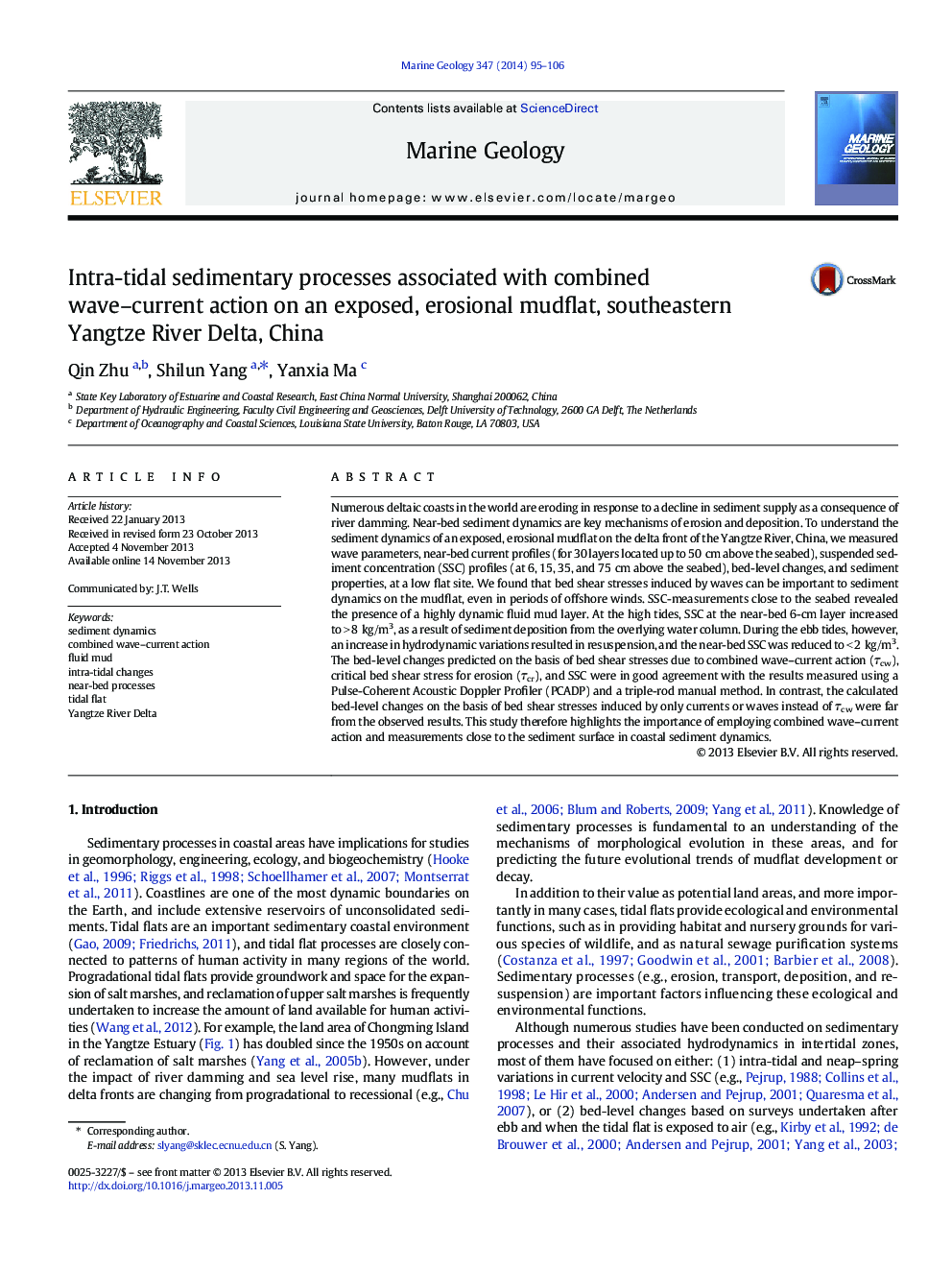| Article ID | Journal | Published Year | Pages | File Type |
|---|---|---|---|---|
| 4718352 | Marine Geology | 2014 | 12 Pages |
•Waves are important in sediment dynamics in shallow water stages on the tidal flat.•Vertical sediment exchange over the mudflat is strong at and around the high tide.•A near-bed fluidized mud layer was observed in slack water at high tides.•Maximum intra-tidal bed level change was much greater than the net tidal cycle change.
Numerous deltaic coasts in the world are eroding in response to a decline in sediment supply as a consequence of river damming. Near-bed sediment dynamics are key mechanisms of erosion and deposition. To understand the sediment dynamics of an exposed, erosional mudflat on the delta front of the Yangtze River, China, we measured wave parameters, near-bed current profiles (for 30 layers located up to 50 cm above the seabed), suspended sediment concentration (SSC) profiles (at 6, 15, 35, and 75 cm above the seabed), bed-level changes, and sediment properties, at a low flat site. We found that bed shear stresses induced by waves can be important to sediment dynamics on the mudflat, even in periods of offshore winds. SSC-measurements close to the seabed revealed the presence of a highly dynamic fluid mud layer. At the high tides, SSC at the near-bed 6-cm layer increased to > 8 kg/m3, as a result of sediment deposition from the overlying water column. During the ebb tides, however, an increase in hydrodynamic variations resulted in resuspension, and the near-bed SSC was reduced to < 2 kg/m3. The bed-level changes predicted on the basis of bed shear stresses due to combined wave–current action (τcw), critical bed shear stress for erosion (τcr), and SSC were in good agreement with the results measured using a Pulse-Coherent Acoustic Doppler Profiler (PCADP) and a triple-rod manual method. In contrast, the calculated bed-level changes on the basis of bed shear stresses induced by only currents or waves instead of τcw were far from the observed results. This study therefore highlights the importance of employing combined wave–current action and measurements close to the sediment surface in coastal sediment dynamics.
